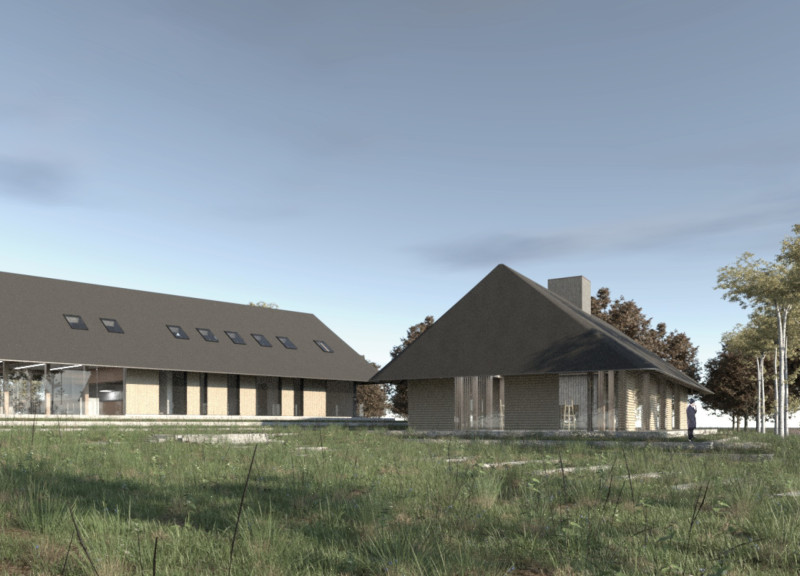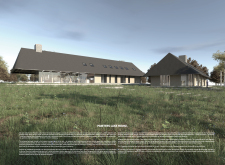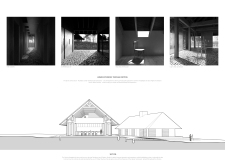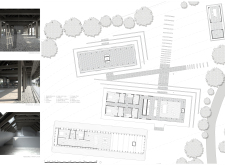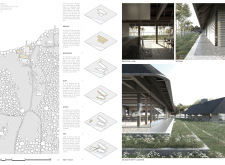5 key facts about this project
The Painters Lake House is located near a calm lake in Latvia, designed to host two painters and their families during an extended residency. It embodies simplicity and modesty, taking cues from traditional Latvian architecture. The overall design aims to merge the built environment with the natural surroundings, creating spaces that enhance artistic inspiration through changing light and shadow.
Architectural Layout
The layout consists of three connected structures: the Residence, the Painters Studio, and the Carpenters Workshop. This configuration encourages easy movement between spaces while promoting a sense of community among users. The Residence contains open communal areas filled with natural light, alongside private spaces for each painter. This design effectively balances the needs for social interaction and personal retreat.
Spatial Considerations
The Painters Studio is designed to be flexible, with a central hearth dividing it into two distinct zones. This allows painters to modify the space according to their creative requirements. Internal timber sliders and external louvers adjust light levels, creating conditions that vary throughout the day, which can inspire different artistic expressions.
Materiality and Structural Integrity
The houses are constructed using a full timber framework, reflecting a commitment to sustainable practices. This choice of material connects the buildings visually to the landscape and ensures structural stability. Wide overhangs extend from the structures, creating shaded areas that help blend indoor and outdoor spaces, inviting nature closer.
Integration with Nature
Terraces surrounding the Residence encourage outdoor interaction and keep both main structures connected to their environment. This arrangement enhances the beautiful views of the lake, allowing residents to engage with the natural beauty that surrounds them.
The design features an overhang that provides shelter to outdoor areas, making them suitable for quiet reflection and artistic practice. This space fosters a strong connection to the lake while offering a comfortable place for contemplation.


